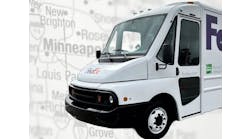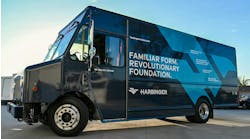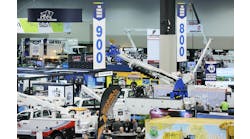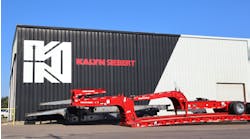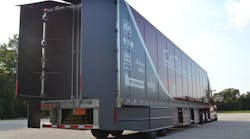The Department of Energy (DOE) has announced the availability of $100 million over the next four years to validate electric truck technology through a third SuperTruck project, this one focused on zero-emission trucks.
The diesel-based SuperTruck programs, which began in 2009 and 2015, respectively, were deemed a success by the DOE. During an April 15 call with trucking industry representatives, Secretary of Energy Jennifer Granholm said SuperTruck 3 will “push the envelope even further through the electrification of the vehicle, and hydrogen and fuel cells.” The funding is available for both medium- and heavy-duty trucks across duty cycles and vocations, from long-haul and pickup and delivery to refuse and tow trucks.
The transportation sector as a whole generated 29% of U.S. greenhouse gas emissions in 2019. “To reach our goal of net-zero carbon economy by 2050, then we absolutely have to figure out a way to drive those emissions down,” noted Granholm, the former governor of Michigan.
The money has been authorized by Congress, according to Granholm, though the House Committee on Appropriations will have the final say. Another $63 million is earmarked for the “Low GHG Vehicle Technologies” funding opportunity to improve current engine technology and build out and increase access to passenger electric vehicle charging infrastructure.
This funding will help truck makers and fleets understand which of the nascent technologies associated with electrification will work on the road, while also serving as “a powerful salvo in our war on the climate crisis,” Granholm remarked.
The DOE, and Biden Administration overall, view climate change as America’s biggest enemy in the coming decades and have declared war on it. Consistent messaging and several actions — from the money allocated to electric vehicles and clean infrastructure in the $2.3 trillion American Jobs Plan to President Joe Biden issuing Executive Order 14008 establishing climate change as a national security threat — indicate as much.
“We cannot delay in waging a full-out war on the climate crisis,” Granholm affirmed.
Because the trucking sector accounts for 73% of domestic goods moved, it’s a logical space to establish a beachhead. And the SuperTruck model has performed admirably in achieving efficiency milestones.
“Within seven years, Volvo, Daimler, Cummins, Peterbilt, and Navistar had blown past our initial goal of 50% improvement in fuel efficiency,” Granholm said of the first SuperTruck, adding “all five SuperTruck 2 projects are on track to hit their goals of more than doubling miles per gallon.”
